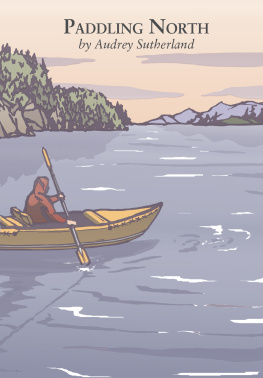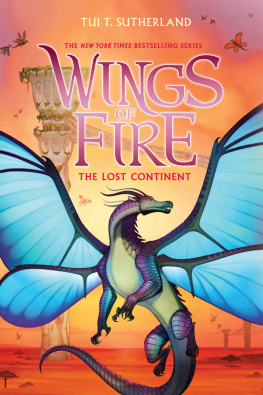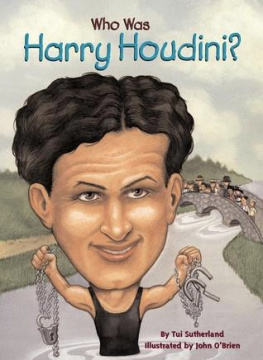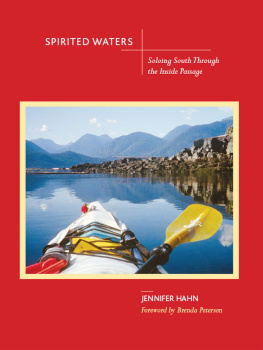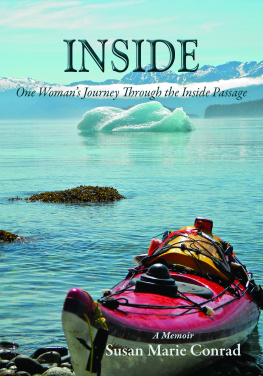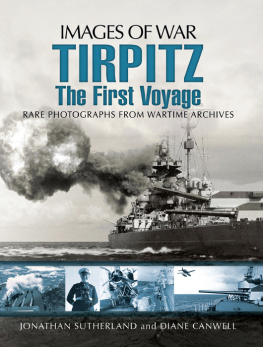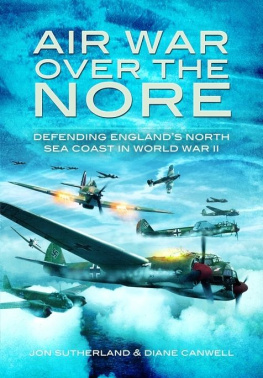Sutherland - Paddling North
Here you can read online Sutherland - Paddling North full text of the book (entire story) in english for free. Download pdf and epub, get meaning, cover and reviews about this ebook. City: Ventura CA;Alaska, year: 2012, publisher: Patagonia Books, genre: Non-fiction. Description of the work, (preface) as well as reviews are available. Best literature library LitArk.com created for fans of good reading and offers a wide selection of genres:
Romance novel
Science fiction
Adventure
Detective
Science
History
Home and family
Prose
Art
Politics
Computer
Non-fiction
Religion
Business
Children
Humor
Choose a favorite category and find really read worthwhile books. Enjoy immersion in the world of imagination, feel the emotions of the characters or learn something new for yourself, make an fascinating discovery.
- Book:Paddling North
- Author:
- Publisher:Patagonia Books
- Genre:
- Year:2012
- City:Ventura CA;Alaska
- Rating:5 / 5
- Favourites:Add to favourites
- Your mark:
- 100
- 1
- 2
- 3
- 4
- 5
Paddling North: summary, description and annotation
We offer to read an annotation, description, summary or preface (depends on what the author of the book "Paddling North" wrote himself). If you haven't found the necessary information about the book — write in the comments, we will try to find it.
Paddling North — read online for free the complete book (whole text) full work
Below is the text of the book, divided by pages. System saving the place of the last page read, allows you to conveniently read the book "Paddling North" online for free, without having to search again every time where you left off. Put a bookmark, and you can go to the page where you finished reading at any time.
Font size:
Interval:
Bookmark:

FOREWORD
This is the story of a trip, taken over two summers, that started in Ketchikan and went all the way to Skagway. Since the first voyage, Ive paddled 8,075 solo Alaskan miles and 22 more years in Alaska and British Columbia. But it is never enough. My boat now is a newer inflatable: longer, lower, and faster, with a rudder and a spray deck that sheds the rain and the seas. I have encountered thirty bears, four wolves, and hundreds of whales. Were still coexisting, and I keep learning. The philosophy is still the same. Go simple, go solo, go now.
THE CHOICE

Every Alaskan has a bear story. Should I start with a true one of mine? The grizzly bear stood there, five feet away, his enormous head visible through the thin plastic sheet over the window in the old cabin door. He was turning the doorknob with his teeth. In a moment he would burst through. Naaah, Ill tell about it later.
I first saw the 600-mile length of southeastern Alaska from the air and then on shore while on a business trip, as part of my job counseling high school students about career choices. As we landed and took off from the five main towns, I looked down on islands: tiny one-tree rocks; islets with sand beaches and coves; a 10-acre isle with a pond, huge trees, and a point for watching both sunrise and sunset; islands with no one on them.
An island is a finite thing, a concept of romance and solitude, from Calypsos island, Ogygia, in Homers Odyssey to Suvarrow in Tom Neales An Island to Oneself. Southeastern Alaska has more than a thousand islands. Four of the five largest towns are on islands.
For years I had searched for a combination of mountains, wilderness, and sea, and here it was. Clear quiet water, snowcapped ridges and peaks, small bays all in the Inside Passage, sheltered from the storms of the open North Pacific. Ferries, freighters, fishing boats, and cruise ships all used it. So could I. Most of the land was within the boundaries of the 16-million-acre Tongass National Forest, the largest national forest in the United States.
There seemed be total wilderness only 10 miles away from any town, and the towns were more than 100 miles apart. That left a lot of space to paddle and explore and camp. Since 1967, between jobs, or whenever I could squeeze in a vacation, Id been voyaging in inflatable canoes. Most of my trips had been along the more remote shores of the Hawaiian Islands: Kona, Na Pali, Hamakua, and Hana, with many along the 3,000-foot-high cliff coast that forms the north shore of Molokai. Id written a book about that coast, Paddling My Own Canoe now in its ninth printing. There had also been paddle trips in Samoa, Norway, Greece, Scotland, and Maine.
The choices were clear. I could paddle solo from Seattle to Skagway, an established route for fishing boats, ferries, and gold seekers. The two names together had a twangy alliteration. Both were Native American, reminders of the Haida and Tlingit people who had paddled cedar canoes for centuries along the misty shores. Skagway was a suitable destination. A classic photo showed hundreds of men toiling up the icy slopes of the Chilkoot Trail who later paddled down the Yukon River to the goldfields.
The second choice would be to go gunkholing, as boaters say, prowling in and out of tiny coves, omitting all of British Columbia for now, and instead starting at Ketchikan, the southernmost town, and meandering north to Skagway, the northernmost. I could connect a roundabout route of hot springs, old cabins, small islands, and resupply towns. I could trace parts of the historic voyages of Cook, Lisianski, Vancouver, and Muir; find the locales of some favorite books; search for mushrooms; and try to communicate with such endearing animals as whales, otters, and loons. I wasnt yet figuring to communicate with grizzly bears.
A theme to weave into the Alaska trip would be one Id practiced on each of my previous expeditions. Part of the fun and art of long-distance paddling and camping trips has been the reverse twist of being able to carry elegant cuisine instead of gruel and granola each weeks international menu of delectable meals weighing no more than 10 pounds. In Alaska I could also add berries, mussels, and salmon.
On either route, the distance would be more than 800 miles. If I launched from Seattle, Id be paddling north inside the protection of Canadas Vancouver Island, with cities and towns, for the first 200 miles, then following the long narrow channels to Prince Rupert. I would then recross the Canadian border and hug the shores up through the Alaska Inside Passage.
If I made the other choice, starting at Ketchikan and routing via Sitka, Id have no cities or suburbs; there would be some inside waters, but also open sea north of Sitka. In Hawaii, Id had strong winds, rough seas, two-foot tides, and dumping surf, but 74-degree water, and I could hug the coast around each island. Alaska had calmer seas and rarely any breaking surf, but 48-degree water and often a range of 20 feet between low and high tide. En route to Sitka I couldnt always hug a coast. There would be four dangerous straits to cross, each one 8 to 12 miles wide. Either choice would be a race against time. I couldnt start until June, and by the end of August I needed to be back on the job in Hawaii.
Once Id visualized the themes and the places and put the choices into words, the decision made itself. I would go meandering, starting in Ketchikan.
My nine-foot-long inflatable canoe would be some sort of first, the smallest boat to go the distance, an impertinent toy compared to Indian cedar-log dugout canoes and modern fiberglass kayaks. It appeared to be a mocking spoofery of all serious expeditions.
Youre paddling 800 miles in Alaska in that? said a man on the beach one day in Hawaii.
He looked at the limp, shapeless roll of plastic on the sand. I attached the hose of the air pump to a valve. You must be a real nut!
The plastic canoe squirmed slowly out of its wrinkles into a tube shape. I moved the hose to the other valves.
Wheres the Donald Duck head and clown feet?
I kept pumping. The second side and the hull assumed a boat shape, a bit like a canoe-shaped doughnut. Eighteen pounds, bright yellow, with red, white, and blue racing stripes down the sides. Its cruising speed was two knots. Racing stripes, indeed!
Why was I using this tiny boat? The answer was clear, if only to me: I already owned it; it would roll up into a duffel bag that I could take on the plane from Hawaii; I had paddled enough rough open-ocean miles in it to know that it was seaworthy; and, above all, it was light enough to carry by myself up the beach and above high tide each night.
My yellow color scheme was reinforced when the catalog order of foul-weather gear arrived. I put it on and walked around my Hawaii living room. The coconut palms swayed in the warm trade winds outside, but in oilskins and souwester I was on deck in Conrads Typhoon, battered by a cold Cape Horn sea with Dana before the mast, and racing for the Americas Cup.
I laughed at the images and knew again that I had two incompatible careers. One was a full-time job: Education Coordinator, the job description said, but I was also a vocational counselor, helping people decide what to do with their lives which only led to my wondering whether I knew what to do with my own. The other job was roaming off to some place Id read about, some nook of the world as isolated as I could get to, given the bounds of little money, an aversion to sponsors, and a strong preference for going alone. Recently, Id taught a series of how-to-kayak classes for the University of Hawaii and had given slide shows about the vagabond career.
Font size:
Interval:
Bookmark:
Similar books «Paddling North»
Look at similar books to Paddling North. We have selected literature similar in name and meaning in the hope of providing readers with more options to find new, interesting, not yet read works.
Discussion, reviews of the book Paddling North and just readers' own opinions. Leave your comments, write what you think about the work, its meaning or the main characters. Specify what exactly you liked and what you didn't like, and why you think so.

